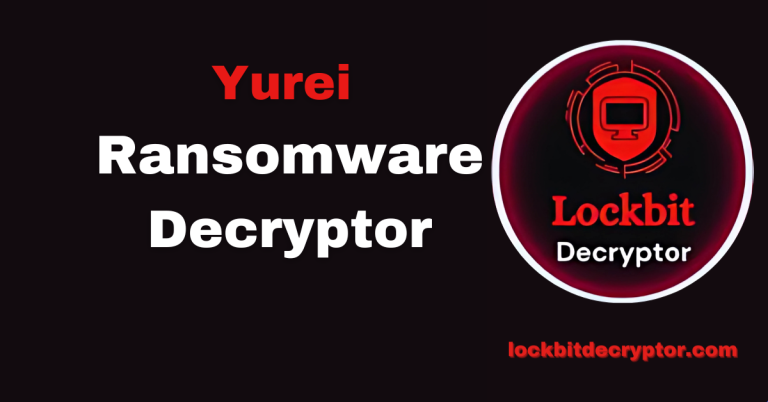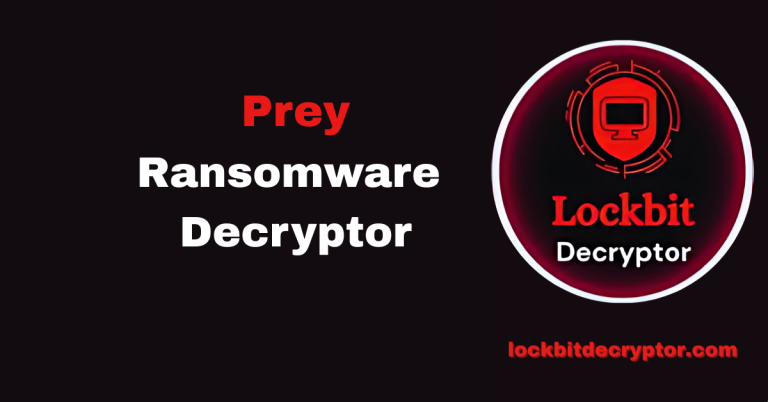How to Remove Jackpot Ransomware and Restore .jackpot27 Files?
Our Custom Jackpot Decryption Tool – Built for Precision and Speed
Our cybersecurity team has reverse-engineered core elements of the Jackpot ransomware (part of the MedusaLocker family) and developed a custom decryptor capable of restoring encrypted files across Windows-based environments. Designed to address various extension variants like .jackpot27 (numbers may vary), this tool offers high recovery rates without paying the ransom.
The decryptor operates in a secure, sandboxed cloud environment and ensures all recovered files pass integrity checks before delivery.
Related article: How to Decrypt BlackNevas Ransomware and Recover .bnvenc Files?
How Our Decryptor Works?
We’ve engineered a multi-layered recovery process that minimizes the risk of corruption and maximizes restoration accuracy.
- Encryption Batch Identification – We match the victim’s ransom note ID with our decryption database to identify the specific encryption scheme used.
- Algorithmic Exploitation – Jackpot uses RSA + AES encryption; our tool analyzes weaknesses and applies selective decryption to minimize data loss.
- Safe Execution – All actions are performed in read-only mode until decryption readiness is confirmed.
Also read: How to Decrypt .BL@CKLOCKED Files and Remove Bl@ckLocker Ransomware?
Pre-Recovery Requirements
Before starting the recovery, the following elements are necessary:
- A copy of the ransom note (READ_NOTE.html)
- Several encrypted files (preferably from different directories)
- Internet access for cloud decryption
- Administrative privileges on the infected machine
Immediate Measures After a Jackpot Infection
A swift, well-structured response greatly increases recovery chances.
- Disconnect the Compromised Device
Remove the affected system from the network to stop further file encryption or spread to other devices. - Preserve All Evidence
Keep encrypted files and ransom notes intact. Retain network logs, system snapshots, and traffic captures for forensic review. - Avoid Rebooting or Formatting
Restarting or wiping the system can trigger secondary encryption stages or erase recovery opportunities. - Seek Professional Help Immediately
Attempting random decryption methods from unverified sources often results in permanent data loss.
Jackpot Ransomware Recovery: Restoring .jackpot27 Files Without Paying Hackers
Jackpot ransomware, linked to the MedusaLocker ransomware family, is a dangerous encryption threat that can cripple businesses, lock critical infrastructure, and cause significant downtime. Victims of the .jackpot27 variant often face the difficult question: How do we get our data back?
While ransomware recovery is never one-size-fits-all, there are proven free and paid methods that can restore files depending on the ransomware build, system state, and available resources.
Free Recovery Routes for Jackpot Ransomware
Not all recovery attempts require paying the ransom. In some cases, victims can recover data through backups, shadow copies, or existing decryptors developed for related ransomware strains like MedusaLocker.
1. Backup Restoration
If you maintain offline or cloud-based backups that escaped encryption, this is the fastest and safest method. Before using them:
- Test backup integrity by mounting or scanning them.
- Ensure the environment is fully cleaned of ransomware before restoring.
Backups stored in immutable systems (e.g., WORM drives or cloud snapshots) often survive ransomware attacks better than connected storage.
2. Windows Volume Shadow Copies
Some older Jackpot or MedusaLocker-based builds may fail to delete shadow copies. If intact, these snapshots allow rollback to earlier system states. However:
- Many newer variants execute commands like vssadmin delete shadows to wipe them.
- Always create a forensic image before attempting restoration to avoid losing volatile recovery data.
3. Publicly Available Decryptors
Although no universal free decryptor exists for modern Jackpot variants, some tools built for early MedusaLocker versions have successfully restored partial data in isolated cases.
MedusaLocker Legacy Decryptors
- Early MedusaLocker variants had weaker RSA key management, allowing security researchers to create limited decryptors.
- Tools like the Emsisoft MedusaLocker Decryptor (now discontinued) were able to recover files from pre-2020 samples.
- While ineffective against current Jackpot builds, these tools can still be tested safely on sample files in a sandboxed environment.
Paid Recovery Routes for Jackpot Ransomware
When free methods fail and backups are unavailable or compromised, paid solutions may be the only viable option. These fall into two main categories: direct ransom payment and professional third-party recovery services.
1. Direct Ransom Payment (Not Recommended)
Paying the attacker may lead to data restoration, but it comes with major risks:
- No guarantee the decryptor will work or decrypt all files.
- High likelihood of embedded malware or backdoors in supplied tools.
- Potential legal issues depending on jurisdiction.
2. Negotiation Services
Some companies hire professional negotiators who specialize in ransomware cases.
- They can validate if attackers actually hold working decryption keys.
- May be able to lower ransom demands.
- However, negotiation fees can be high and outcomes remain uncertain.
3. Our Proprietary Jackpot Decryptor
Our in-house decryption solution is specifically engineered for the .jackpot27 variant and related MedusaLocker builds.
Key Features:
- Reverse-Engineered Compatibility: Targets both standard and hybrid builds of Jackpot ransomware.
- Login ID Mapping: Uses the victim ID from the ransom note to match encryption keys to your specific case.
- Cloud + Blockchain Verification: Files are processed in a secure, sandboxed cloud environment with blockchain-based integrity proofing.
- Windows, Linux & ESXi Support: Handles encrypted files across enterprise, hybrid, and server environments.
- Offline Option: Air-gapped decryption available for highly sensitive networks.
How to Use Our Jackpot Decryptor?
- Isolate the Infected System
- Disconnect it from the network to prevent further spread or encryption.
- Preserve encrypted files and ransom notes for analysis.
- Disconnect it from the network to prevent further spread or encryption.
- Submit Encrypted Samples
- Provide 2–3 encrypted files along with your ransom note via our secure upload portal.
- Ensure these files do not contain sensitive personal data, as they will be used only for decryption key matching.
- Provide 2–3 encrypted files along with your ransom note via our secure upload portal.
- Variant & Key Analysis
- Our team examines the encryption pattern and cross-references it with our key database.
- If a direct match is found, decryption can begin immediately.
- If not, our key extraction process is initiated.
- Our team examines the encryption pattern and cross-references it with our key database.
- Receive & Run Decryptor Tool
- We supply a customized decryptor configured for your unique victim ID.
- The tool can run in either connected or offline mode.
- You’ll receive a detailed instruction guide for safe execution.
- We supply a customized decryptor configured for your unique victim ID.
- Verify & Restore
- Decrypted files are validated for integrity.
- You can choose between full-system restoration or targeted file recovery.
- Decrypted files are validated for integrity.
Also read: How to Remove Pear Ransomware and Restore .pear Encrypted Files?
Why Acting Fast Matters?
Jackpot ransomware not only encrypts data but often exfiltrates it before locking systems, raising the risk of public leaks or dark web sales. The sooner recovery begins, the higher the chances of preventing permanent damage.
Our team has restored Jackpot-encrypted systems for organizations across finance, healthcare, manufacturing, and public sectors. Whether your case requires a free recovery attempt or our proprietary decryptor, the priority is immediate isolation, forensic preservation, and expert-led remediation.
Offline vs. Cloud-Based Recovery Approaches
- Offline Recovery: Suitable for highly sensitive data environments. Operates in isolated systems without network connectivity.
- Cloud-Assisted Recovery: Faster processing with real-time expert supervision, secure uploads, and verified integrity reports.
Our tool supports both modes, giving organizations flexibility depending on their operational needs.
Understanding Jackpot Ransomware
Jackpot ransomware belongs to the notorious MedusaLocker family and is known for its .jackpot27 extension, although the numeric suffix may vary. It encrypts files, changes desktop wallpapers, and delivers a ransom note threatening double extortion — the release or sale of stolen data if payment is not made.
How Jackpot Gains Access?
Jackpot infections often happen via:
- Malicious email attachments and phishing campaigns
- Pirated software and cracked activation tools
- Fake technical support scams
- Malicious ads and compromised websites
- Infected USB drives and peer-to-peer file sharing
Encryption Process
Jackpot uses a hybrid RSA + AES encryption method. Files are renamed with an added extension like .jackpot27. Once complete, the malware replaces the desktop wallpaper and drops a ransom note (READ_NOTE.html) with payment instructions.
Indicators of Compromise (IOCs)
- Encrypted file extensions: .jackpot27 and similar numeric variants
- Ransom note: READ_NOTE.html
- Criminal contact emails: recovery1@salamati.vip, recovery1@amniyat.xyz
- Malware detections: Listed on VirusTotal with names such as Ransom:Win64/MedusaLocker.MZT!MTB
Best Practices to Prevent Future Attacks
- Keep offline backups updated regularly
- Avoid downloading from unverified sources
- Keep operating systems and software patched
- Use multi-factor authentication for all remote services
- Disable unused RDP or VPN access points
Global Impact and Victim Statistics
Top 5 Countries Affected
Industries Targeted
Timeline of Jackpot Activity
Ransom Note Analysis
The READ_NOTE.html contains the following message:
Your personal ID:
–
YOUR COMPANY NETWORK HAS BEEN PENETRATED
Your files are safe! Only modified.(RSA+AES)
ANY ATTEMPT TO RESTORE YOUR FILES WITH THIRD-PARTY SOFTWARE WILL PERMANENTLY CORRUPT IT. DO NOT MODIFY ENCRYPTED FILES. DO NOT RENAME ENCRYPTED FILES.
No software available on internet can help you. We are the only ones able to solve your problem. We gathered highly confidential/personal data. These data are currently stored on a private server. This server will be immediately destroyed after your payment. If you decide to not pay, we will release your data to public or re-seller. So you can expect your data to be publicly available in the near future.. We only seek money and our goal is not to damage your reputation or prevent your business from running. You will can send us 2-3 non-important files and we will decrypt it for free to prove we are able to give your files back.Contact us for price and get decryption software.
email:recovery1@salamati.vip
recovery1@amniyat.xyz
* To contact us, create a new free email account on the site: protonmail.com
IF YOU DON’T CONTACT US WITHIN 72 HOURS, PRICE WILL BE HIGHER.
* Tor-chat to always be in touch:
Conclusion – Restoring Control After a Jackpot Attack
Jackpot ransomware is a formidable threat, but rapid isolation, evidence preservation, and professional recovery services greatly improve the chances of full restoration. With our tailored decryptor for .jackpot27 and its variants, victims can avoid ransom payments and regain operational stability.
Frequently Asked Questions
Contact Us To Purchase The Jackpot Decryptor Tool







2 Comments